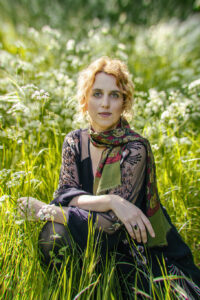
Lily Boukouvala, born in Greece in 1981, is a professional photographer graduated in photography and electronic graphics in Athens. She currently lives and works in Paris.
It is an indisputable fact, we live in an era where the image is queen and even where our entire daily life is mediated by an uninterrupted flow of images, always at the service of the market. We wonder if it is still possible today, in these conditions, to undertake an artistic research seeking to capture truths in nature. What could such an art be today?
Lily takes us on a journey, with her work, into an environment that awakens instincts somewhat dormant in the shadows, in the ordinary man, and which, under her eye, reveal these lively rhythms that now govern his life.
When one renounces all bias and begins to listen to the pulsations of life that run through the landscape, the very act of photographing becomes simpler, like an inner voice that guides choices. Choices that impose themselves immediately by their excellence, at the moment of a capture that is never captured, in the reconstruction that the image offers. If the practice of photography goes through an extraordinary experience of ecstasy and identification or tuning with the pulsation of the landscape, any preconception of the results of the photograph being secondary, what really counts is this experience. We are clearly outside of competitions seeking to seduce no more by new technical prowess than by market trends. Faced with the mystery of nature, all remain equal and yet the results of each photograph (with the sense of action, φωτογράφιση and not of the result obtained, φωτογραφία) are different. We rejoice when we manage to reconstruct images that do justice to the lived experience. It is left to others, to the public, to each of us, to judge the aesthetic value of these images, according to our own criteria, and to find there a point of entry into the mystery of nature.
Through her works, we will perceive the inner drive that animates her, overwhelms her and that combines in her her double talent as a walker and an interpreter. A nature constantly soliciting the five senses, the most important of which, according to Aristotle, is that of sight. And there, with a light press of a button, a simple click on a device, the landscape freezes to instill the fragility of a moment in the mental universe of the viewer, leading him to obey the very wandering of his own gaze, to constantly recompose his vision to determine a more or less stable reading. By fixing her image, the photographer sets the viewer in motion.
The very drama of the plot of the phenomena of Nature offers an aesthetic pleasure to the one who can perceive it and observe it carefully. But even more, the possibility of internalizing this drama and the coordination of the observer’s experience with the living pulse of the surrounding landscape offers a powerful emotion that can be expressed, captured, and left traces. The practice of photography can exist, and be exercised, through such an experience. To make an attempt to condense the symbolic language of Nature.
The traces of such an attempt at imprinting have an unlimited variety of aesthetic results just as infinite and limitless is the type of experiences that support it.